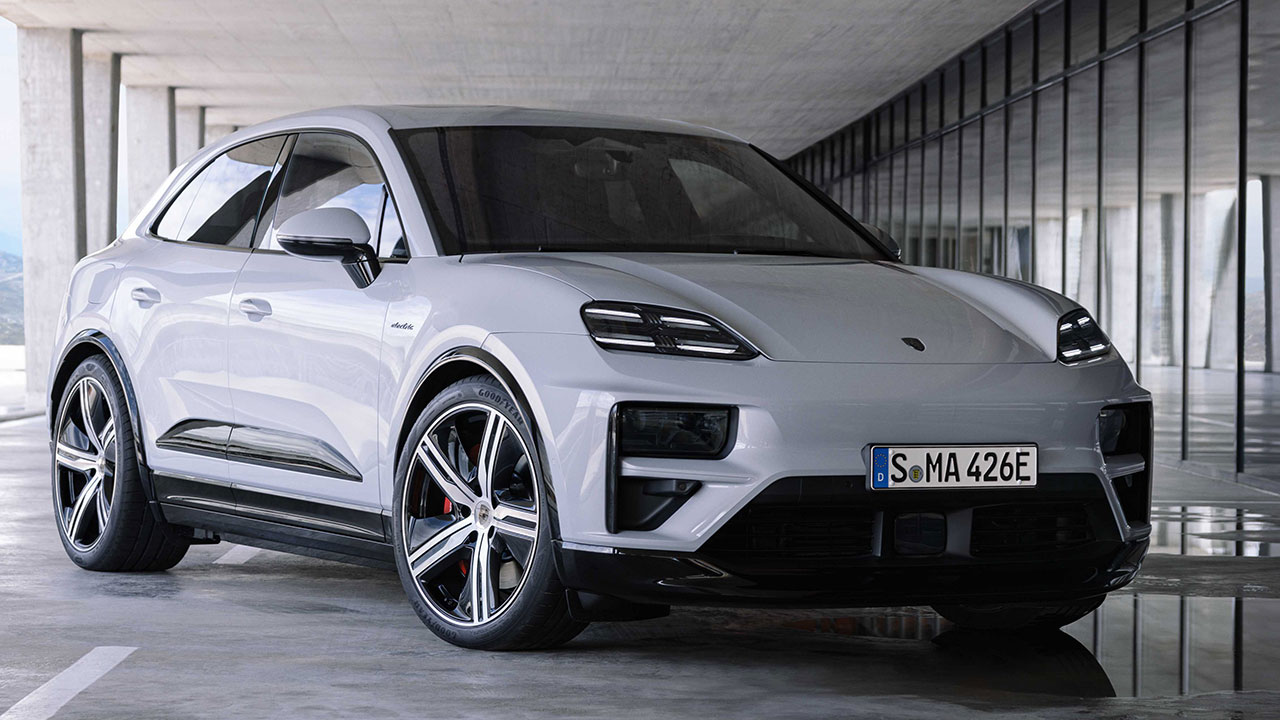Design and dimensions
In terms of design, this is typical Porsche - evolution rather than revolution. The characteristic shape and proportions of the 'first' Macan are retained, but at the front there are new Taycan-style daytime running lights. The headlights have moved to the front bumper and the bonnet has become larger. However, the bonnet line is lower, as there is no engine underneath, just a small extra boot for charging cables and the like.
Porsche also claims a low drag coefficient of 0.25 thanks to the use of active aerodynamic elements such as a retractable rear spoiler, as well as flaps on the front body panel and underbody cladding.

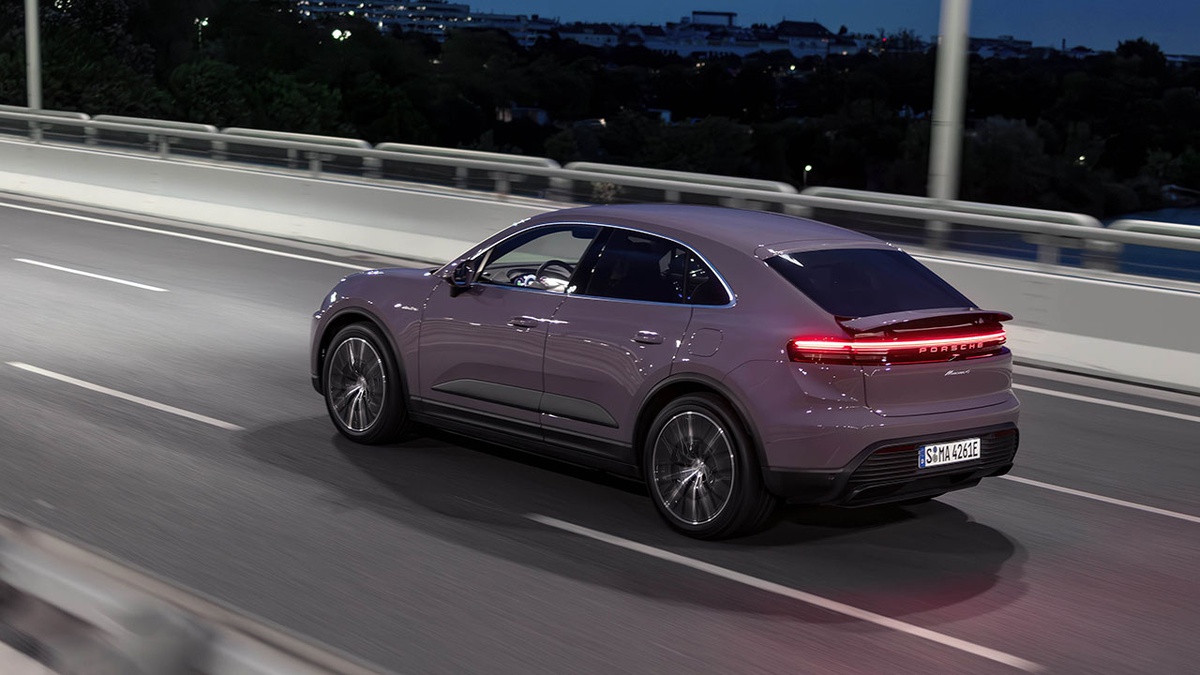
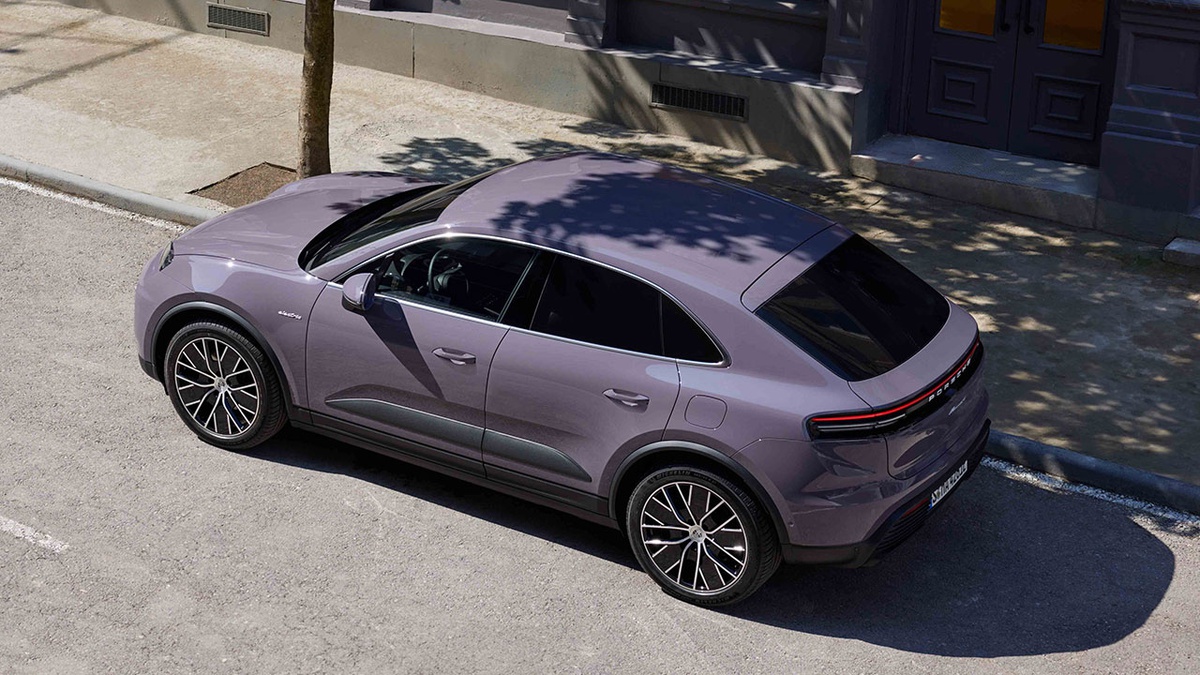

2024 Porsche Macan
With a length of 4.78 metres, the new model is five centimetres longer than the current Macan with internal combustion engine. The height is 1.62 metres, which is at most a few millimetres more than its predecessor. The wheelbase of 2.89 metres and the height of 1.62 metres are almost identical to the Tesla Model Y.
Platform
The second-generation Macan is based on a platform co-developed with Audi. This platform, dubbed Premium Platform Electric (PPE), utilises an 800-volt electric architecture and will underpin the future Audi A6 and Q6 electric cars and likely the all-electric Porsche Cayenne. Two all-wheel drive versions will be offered at launch: the Macan 4 and the Macan Turbo.
Features of the new Porsche Macan 4 and Porsche Macan Turbo
| Macan 4 | Macan Turbo | |
|---|---|---|
| Drive | AWD | AWD |
| Power / torque | 300 kW / 650 Nm | 470 kW / 1,130 Nm |
| 0-100 km/h / Top speed | 5.2 sec. / 220 km/h | 3.3 sec. / 260 km/h |
| Battery capacity nominal / usable | 100 / 95 kWh | 100 / 95 kWh |
| WLTP range | 613 km | 519 km |
| AC/DC charging power | 11 / 270 kW (800 Volt) | 11 / 270 kW (800 volts) |
| DC charging time (10-80%) | approx. 21 min | approx. 21 min |
| Price in Germany, from | 84,100 euros | 114,600 euros |
Propulsion is provided by permanent magnet synchronous motors (PSM). Interestingly, the front motor in both versions of the Macan is the same, developed by Audi. But the rear one has different power, depending on the Macan version. Porsche developed the rear engine together with Bosch, in the Turbo version it can briefly develop all available 470 kW.
Battery and range
Initially, Porsche will offer just one version of the battery pack with a nominal capacity of100 kWh, of which 95 kWh will actually be available. The battery pack consists of twelve modules, each containing 15 prismatic cells manufactured by CATL. The battery cells are not sourced from China, but from CATL's new factory near Erfurt, Germany. They are assembled into a battery pack by Bavarian supplier Dräxlmeier.
With a range of 613 kilometres, the new Macan is on par with rivals such as the Mercedes EQE and Ford Mustang Mach-E. At the same time, the Tesla Model Y surpasses it. Surprisingly, despite the significant difference in maximum power, there is not much difference in range between the Macan 4 and the Macan Turbo. The former covers 613 kilometres in WLTP tests, the latter 591 kilometres.
Acceleration
Speaking of acceleration, Porsche claims that the Macan 4 can accelerate from 0 to 100 km/h in 5.2 seconds, while the Turbo version does it in 3.3 seconds. This performance is achieved by activating Launch Control, which briefly engages the Overboost function. The top speeds are 220 and 260 km/h respectively.
Charging
Charging is possible with up to 270 kW of power at post-current stations. Like the Taycan, the Macan is built on an 800-volt architecture. This allows the battery to be charged from 10 to 80 per cent in about 21 minutes. The Taycan's spec sheet lists 22.5 minutes, but from 5 to 80 per cent, and yes, the battery there is smaller (84 or 71 kWh). That means the Macan's charging rate is slightly higher (3.2 instead of 2.8 kWh/min).
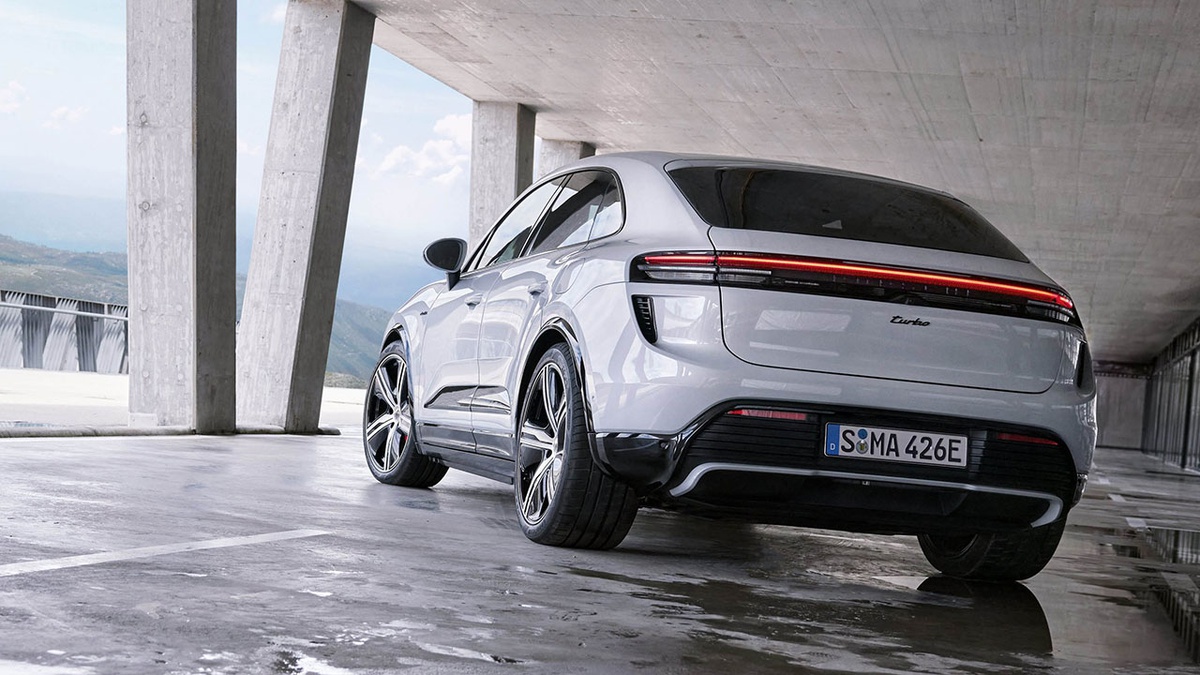
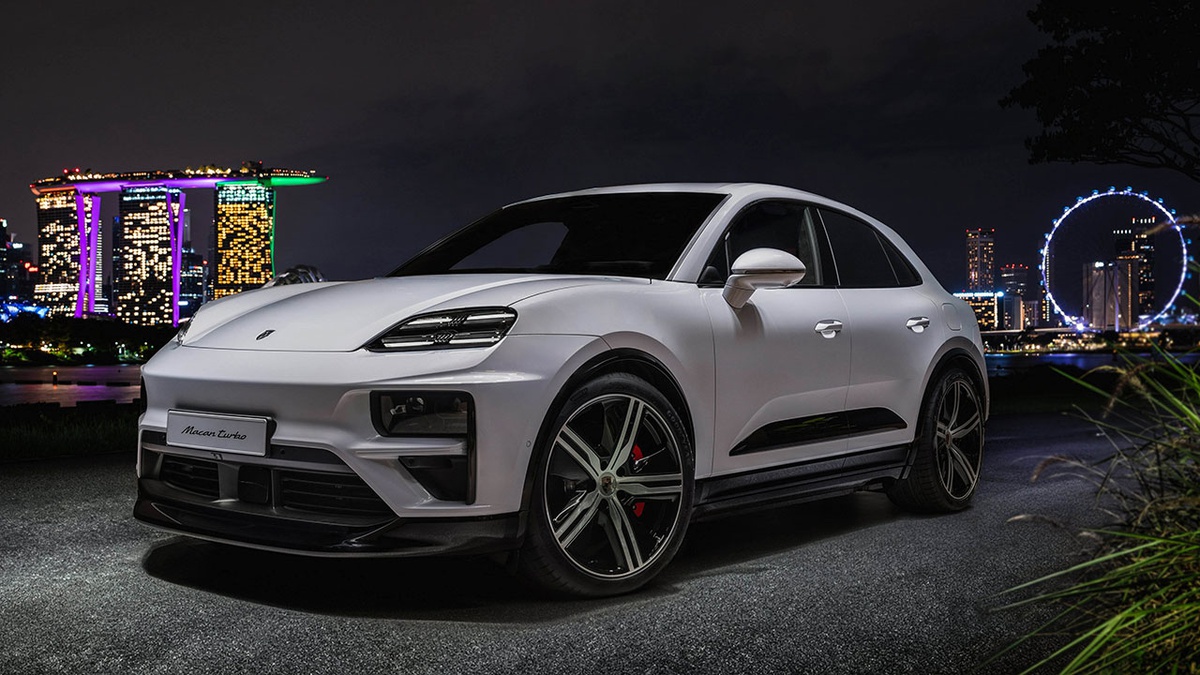
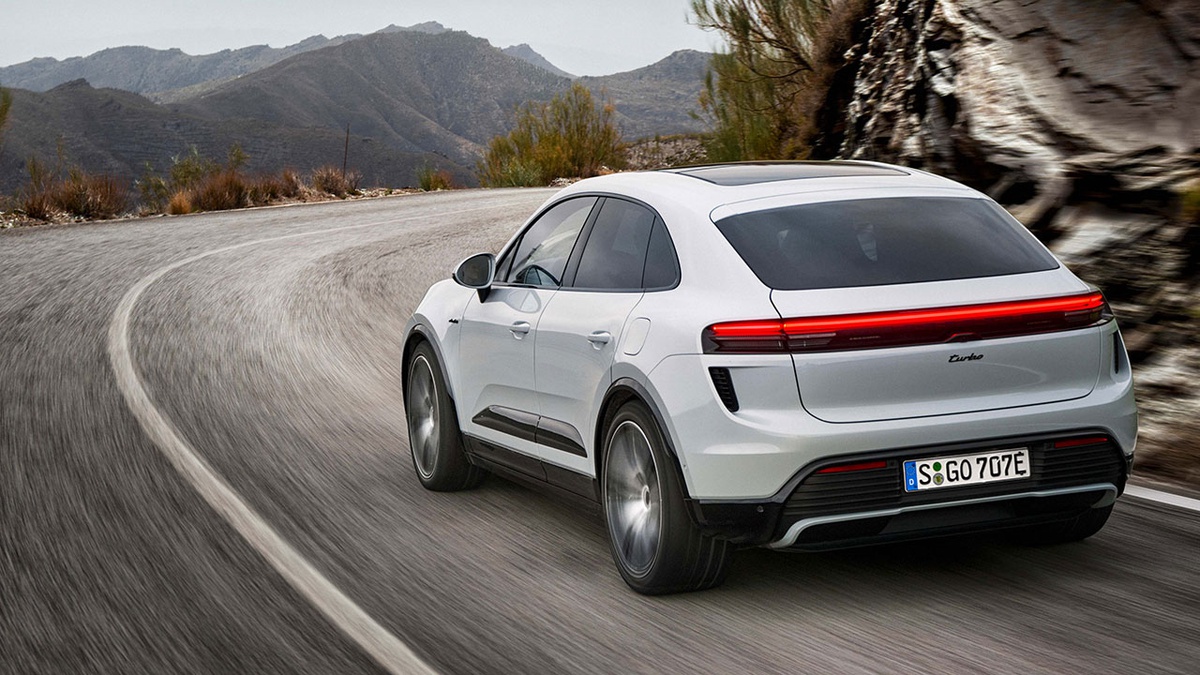

2024 Porsche Macan
At 400-volt charging stations, the battery is conventionally split into two by means of a high-voltage switch. These "split" batteries are then charged separately at up to 135 kW. In addition, the Macan can also be charged from standard AC wall chargers with a capacity of up to 11 kW.
Suspension
The suspension of the new Porche Macan is multi-lever front and rear. The Macan has conventional springs as standard. Air suspension with Porsche Active Suspension Management (PASM) adaptive dampers is available as an option.
New for the Macan is a fully steerable chassis system that turns the rear wheels at an angle of up to five degrees synchronously or in counter-phase with the front wheels. Turning the wheels in the opposite direction helps manoeuvre the car at low speeds, while turning them in the same direction as the front wheels at high speeds improves stability.
Interior
The interior of the new Porsche Macan is reminiscent of other Porsche models such as the recently updated Cayenne and the new third-generation Panamera. There's an all-digital dashboard with a neat curved display, and a wide screen in the middle that runs the latest version of the infotainment system.
The P, N, R and D driving modes are activated by a switch to the right of the steering wheel. The interior lighting fulfils not only a design role, but is also used by the safety system: for example, it flashes if you endanger an oncoming cyclist by opening the door.
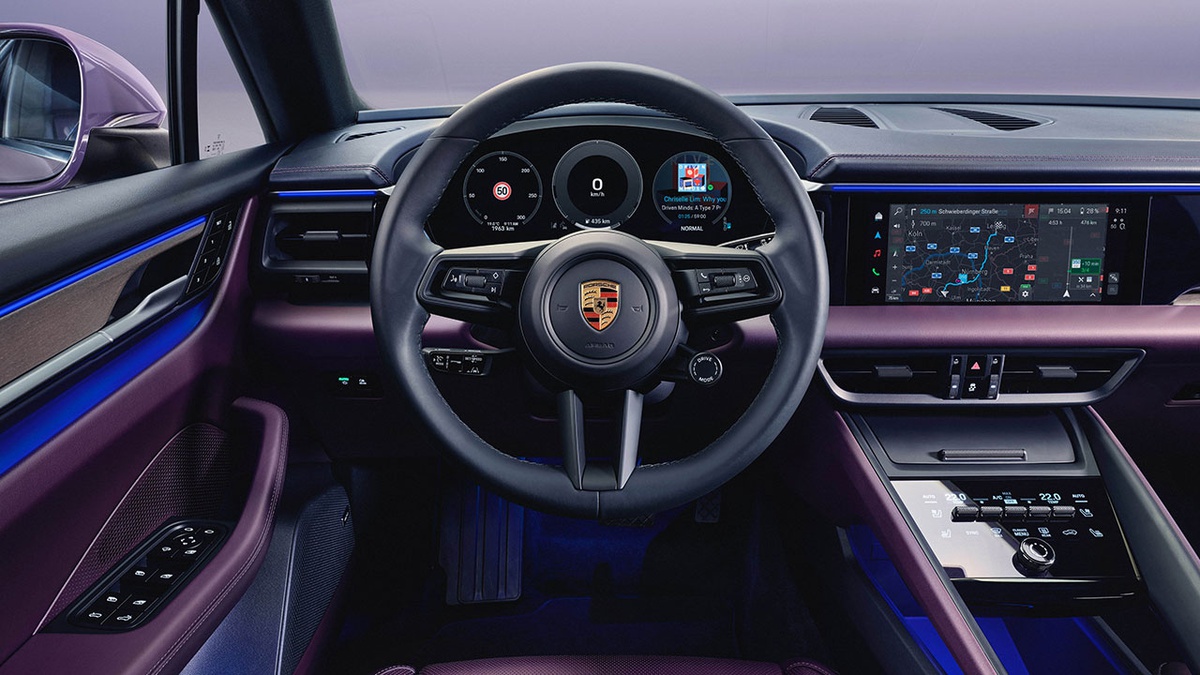
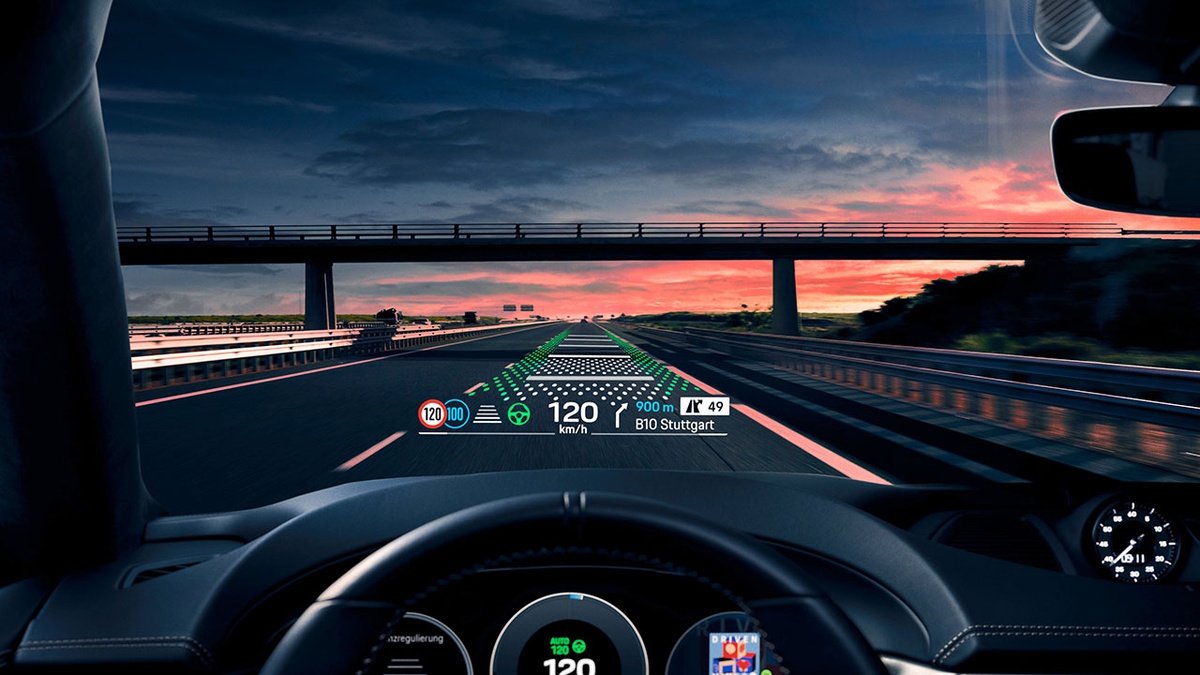
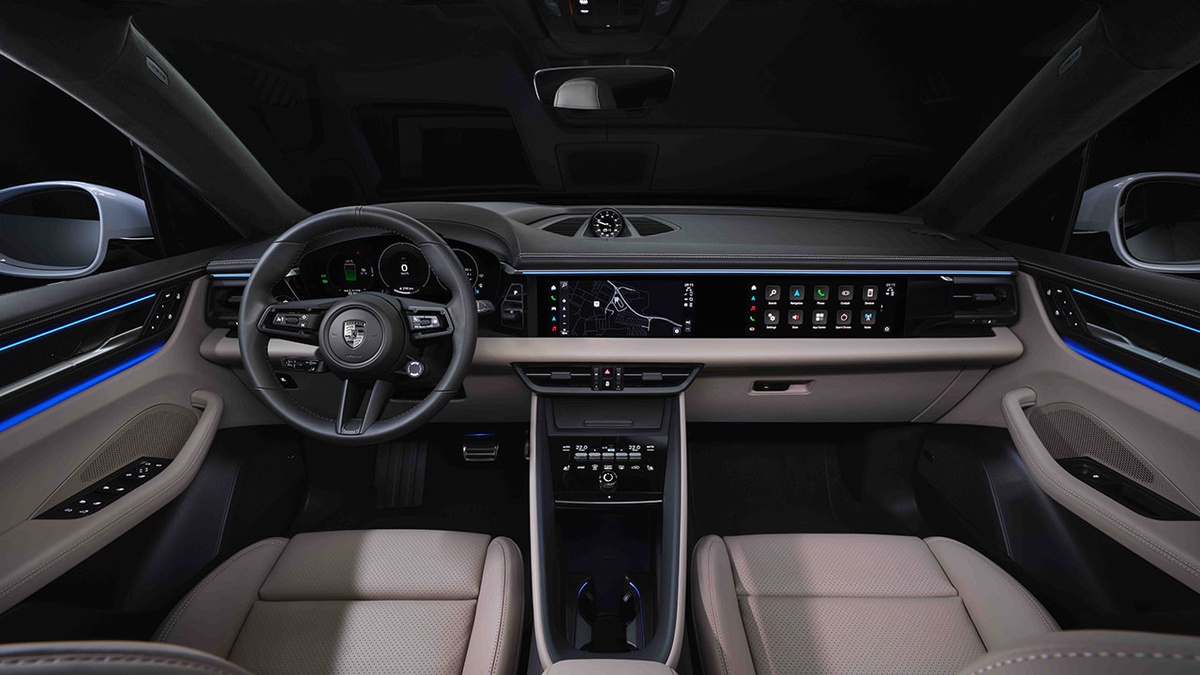
2024 Porsche Macan
Keeping up with the times, popular apps such as Spotify and YouTube are pre-installed on the infotainment system running Android Automotive OS. There's also an optional passenger display and an optional augmented reality projection display. Despite all this newness, however, followers of the classic approach to car design will be pleased to find physical climate control controls and volume control on the centre console.
Boot volume
The main boot has a capacity of up to 540 litres. The Macan Turbo has a slightly smaller boot compartment as it houses a subwoofer. There's also a front boot for 84 litres. If you fold down the backrests of the rear seats, the Macan can hold up to 1,348 litres of luggage. Both versions of the electric Macan can tow trailers weighing up to two tonnes.
Prices, production, launch
The Porsche Macan 4 and Macan Turbo are already available to order. In Germany, the Macan 4 is available from around 84,000 euros. This makes it slightly more expensive than the Macan S with the 280 kW petrol engine, which costs 80,000 euros. However, a Macan Turbo with standard air suspension costing around €115,000 is significantly more expensive than the top-of-the-range model with an internal combustion engine. The power output of the electric Macan Turbo is significantly higher, though: 470 kW versus 324 kW.
In the US, the Macan 4 Price starts at $80,450, which is almost $19,000 more than the base model with an internal combustion engine. The Turbo costs $106,950, which is $18,500 more than the current top-of-the-line GTS.


2024 Porsche Macan
The new electric Porsche Macan will be produced in parallel with the previous version with internal combustion engine. However, in Europe the crossover with internal combustion engine will no longer be sold due to new EU rules on cybersecurity, to which the outgoing Macan can not be adapted. In America such restrictions were not introduced, so the first generation of the model will remain on sale for some time.
The new electric Porsche Macan will be produced at the same plant in Leipzig as the previous version.
